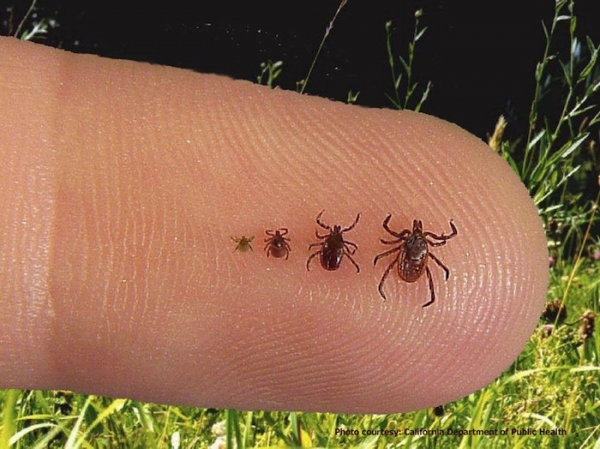NEWPORT — Heath officials are reminding Vermonters that tick season is underway across the state.
A growing number of Vermonters are falling ill with diseases spread by ticks, such as Lyme disease and anaplasmosis. These tickborne diseases are preventable if you take action to stay safe while enjoying the outdoors now, and in the warmer months ahead.
“The black-legged tick causes over 99 percent of the tickborne diseases reported in Vermont,” said Bradley Tompkins, infectious disease epidemiologist at the Vermont Department of Health. “During the spring, ticks are active and looking to feed on people or their pets. The trouble is these ticks can be as small as a poppy seed right now, so we all need to be aware of the risks and take action to protect ourselves.”
The Health Department encourages Vermonters to follow these three simple steps to avoid tickborne diseases:
REPEL – Before you go outside, apply an EPA-registered insect repellent on your skin and treat your clothes with permethrin. When possible, wear light-colored long sleeved shirts and long pants, and tuck your pants into your socks to decrease access to you skin. Inspect yourself regularly when outside to catch any ticks before they attach.
INSPECT – Do daily tick checks on yourself, your children and pets. Check yourself from head to toe.
REMOVE – Remove ticks promptly. Showering within two hours of coming indoors has also been proven effective in preventing Lyme disease by washing ticks off the skin.
If you were bitten by a tick, watch for early signs of disease during the weeks following the bite. The first sign of Lyme disease is often an expanding red rash at the site of the tick bite.
The rash usually appears seven to 14 days after the tick bite, but sometimes it takes up to 30 days to appear. Not everyone gets the rash, so be on the lookout for additional symptoms of early Lyme disease, such as fatigue, headache, fever, chills, swollen lymph nodes, and muscle and joint pain.
Early signs of anaplasmosis are fever, muscle pain and malaise. Both diseases can be successfully treated with antibiotics, especially if treatment is given early.
Get more tips and information for reducing your risk of tick bites, download tick-identification cards, see how to safely remove a tick, and read our booklet “Be Tick Smart,” at healthvermont.gov.


